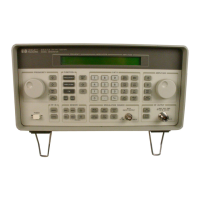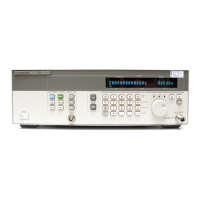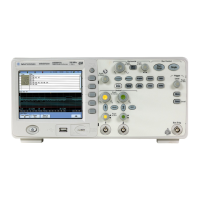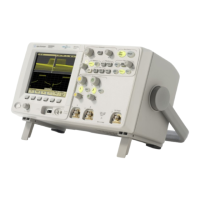710
S:\Hp8960\E1962B CDMA 2000\Pi Release\Reference Guide\Chapters\cdma2000_ts_fm.fm
Frequency Modulation (FM) Troubleshooting
Frequency Modulation (FM) Troubleshooting
Possible Setup Issues
The Trigger Arm should always be set to Single for GPIB operation (not Continuous).
If digital measurements are active, turn them off or set their trigger source to Immediate. See “Triggering of
Measurements” on page 218.
The distortion measurement is only returned if it has been enabled (SET:FM:DIST:STAT ON), otherwise the
value 9.91E+37 is returned, signifying that a valid measurement was not made.
Distortion measurements require that the Distortion Fundamental Frequency to be specified
(SET:FM:DIST:FREQ <value in Hz>).
The modulation frequency measurement is only returned if it has been enabled (SET:FM:FREQ:STAT ON),
otherwise the value 9.91E+37 is returned, signifying that a valid measurement was not made.
Both FM distortion and audio distortion measurements are available in the test set. Make sure you are
querying the FM Distortion measurement (FETCh:FM:DIST?) in your program and not the audio distortion
measurement (FETCh:AFAN:DIST?) when making an FM distortion measurement.
Be sure to use the type of detector specified for deviation measurements in the applicable standard. For
example, if the measurement specification is for peak deviation, be sure to use the Peak+ or Peak- detector
instead of the RMS detector. If the signal being measured is noisy, you can use the RMS detector to make a
more stable measurement and then multiply the result by 1.414 to arrive at the peak value.
All measurements are performed after any filtering, de-emphasis, and expansion are performed. When
measuring SAT deviation and frequency, the Filter Type should normally be set to 100 Hz BW BPF and the
100 Hz BW BPF Center Frequency should be set to the SAT frequency. The C-message filter is often used for
measurements made on signals with FM rates in the normal voice frequency range (such as the 1004 Hz tone
used for distortion measurements).
This measurement can only be used for analog signals, such as an analog voice channel (AVC). You cannot use
this measurement when the mobile is on a digital traffic channel (DTC).
The expected signal frequency (or AVC channel number) and input level must be specified in your program for
accurate measurements. This is done either through the base station emulator settings, when the mobile is
first put on an AVC, or by manually controlling the test set’s measurement receiver. See “Active Cell Operating
Mode” on page 86, “Active Cell Operating Mode” on page 86, and “Receiver Control” on page 194 for
information on setting the expected input frequency.
To meet performance specifications, the input signal must be in the frequency range of 800 MHz to 960 MHz or
1.70 GHz to 2.0 GHz, and be within 2.5 kHz of the expected input frequency, at a power level (at the RF
IN/OUT connector) of -15 dBm to +40 dBm. The specified FM deviation range is 0 Hz to 16 kHz, at a
modulation rate of 100 Hz to 15 kHz. FM Distortion is specified over the modulation rate range of 100 Hz to
10 kHz.
The trigger source is always immediate for this measurement. No trigger delay or protocol triggering is used.

